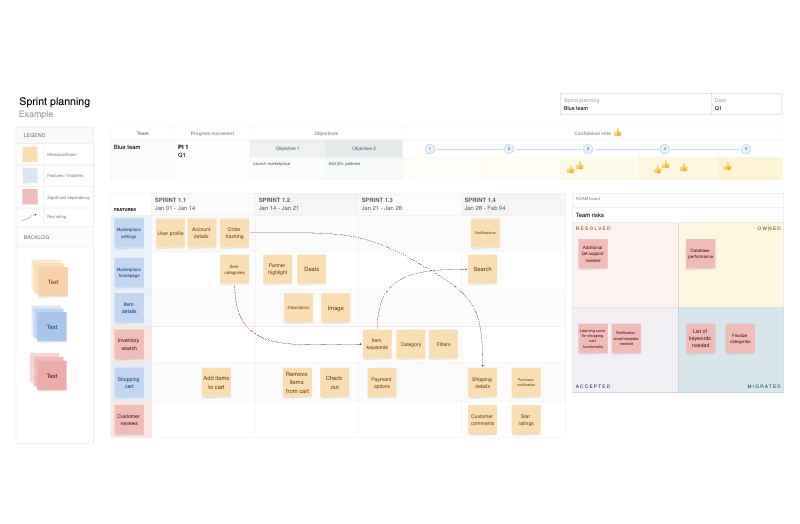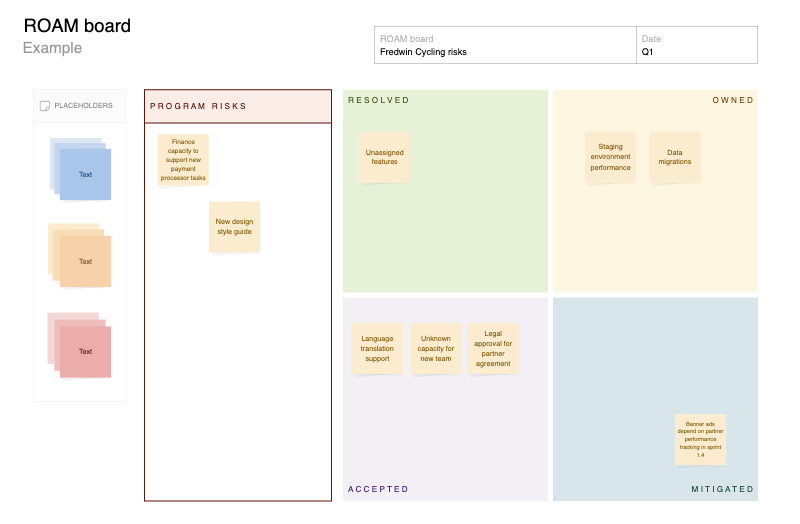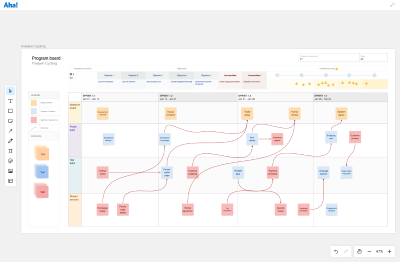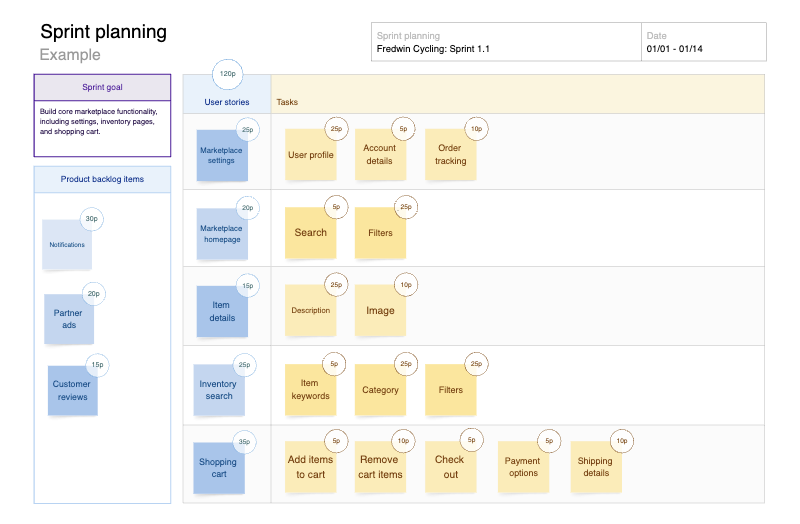SAFe® framework templates
Map agile release train (ART) and team-level workflows using SAFe framework components
Use template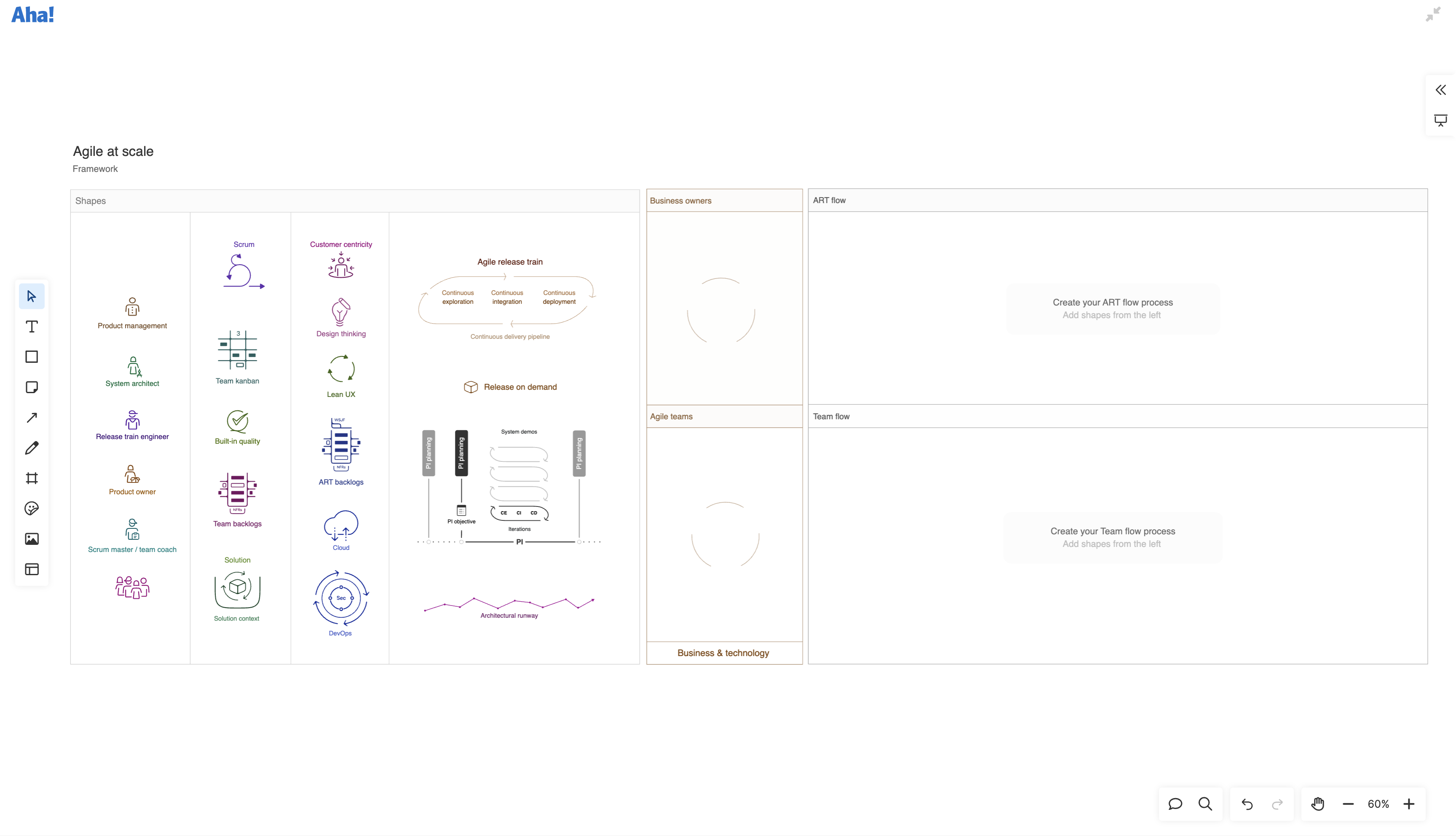
About the SAFe framework template
The SAFe framework introduces formal structure to large-scale agile planning — outlining how roles, teams, and value streams coordinate across an enterprise. But every organization implements it differently. Some follow the model closely. Others adapt it to suit their culture or constraints.
This template gives you a way to document how your organization interprets SAFe in practice. It includes shapes for common roles and events, plus a flexible layout that spans both ART-level coordination and team-level delivery. Use it to clarify expectations, surface mismatches, and set a repeatable standard for how work flows.
If SAFe feels too rigid for your needs, you might explore The Aha! Framework for product development or scrum framework templates instead. Or build a custom framework using shapes and swimlanes to reflect your own approach.
Included in the SAFe framework template
This SAFe framework template includes built-in capabilities such as:
Pre-built shapes for SAFe roles, workflows, and planning events
Labeled swimlanes for business owners, agile teams, and technology functions
Flexible formatting with drag-and-drop objects, connectors, and editable text
Inline comments to gather feedback, questions, and ideas from teammates
Presentation frames to easily share your work
How to use the SAFe framework template
Use this template to map how your teams apply the SAFe framework across planning cadences, coordination levels, and roles. Start by selecting shapes from the left panel to represent common SAFe components (like product managers, scrum masters, PI planning events, or release trains). Place them in the grid layout, using the top half to show ART-level coordination and the bottom half to represent team-level activities.
Add swimlanes to clarify which groups are responsible for each activity. You might include tracks for business, architecture, and engineering roles, or distinguish between different teams using colors. Label shapes with both the role and cadence (e.g., "Product Owner - Weekly") to make timing visible. Use connectors to show how work flows across levels or handoffs occur between functions.
Sticky notes and inline comments are useful for adding context, raising questions, or flagging areas of ambiguity. Once the layout is complete, share the whiteboard with key collaborators. You can link it to related records in Aha! Roadmaps or publish it in your internal knowledge base as a reference point for planning sessions and retrospectives.
Best practices
Clarify how your organization operates and set a standard others can follow.
Map what is actually happening: Show how your organization actually operates. You are more likely to uncover inconsistencies, mismatched cadences, or missing responsibilities when you reflect the real state first.
Make roles and timing explicit: Add the responsible role and planning cadence for every major activity. This helps others see how work progresses — especially when teams run on different cycles or use different delivery methods.
Call out exceptions: Not everything fits neatly into the SAFe model. Use comments or callouts to flag known deviations — like a team that uses kanban while others follow scrum. Documenting these differences avoids confusion later.
Make it accessible: Add the final diagram to your knowledge base, then revisit it before each PI planning cycle. This way, it becomes a reference point for new team members and a tool for improving process discipline.
FAQs about the SAFe framework template
Why is documenting your SAFe framework important?
SAFe introduces a lot of roles and events, which can become unclear as teams evolve or new people join. A visual diagram helps everyone understand how your version of the framework works, including how teams coordinate and where decisions get made.
What if your process is still evolving?
That is the perfect time to use this template. Capturing your current state creates a baseline for improvement. You can layer in ideas for future changes or use colors and comments to show what is planned versus what is real.
Who is this SAFe framework template for?
This template is designed for product managers, RTEs, and agile coaches working in organizations that use or adapt the SAFe framework. It is especially useful for those tasked with clarifying process or preparing for PI planning.
Is this template free to use?
Yes. To use this SAFe framework template, sign up for a free 30-day trial of Aha! Whiteboards. (You can also try this template in Aha! Roadmaps if you need a complete product management solution.)

